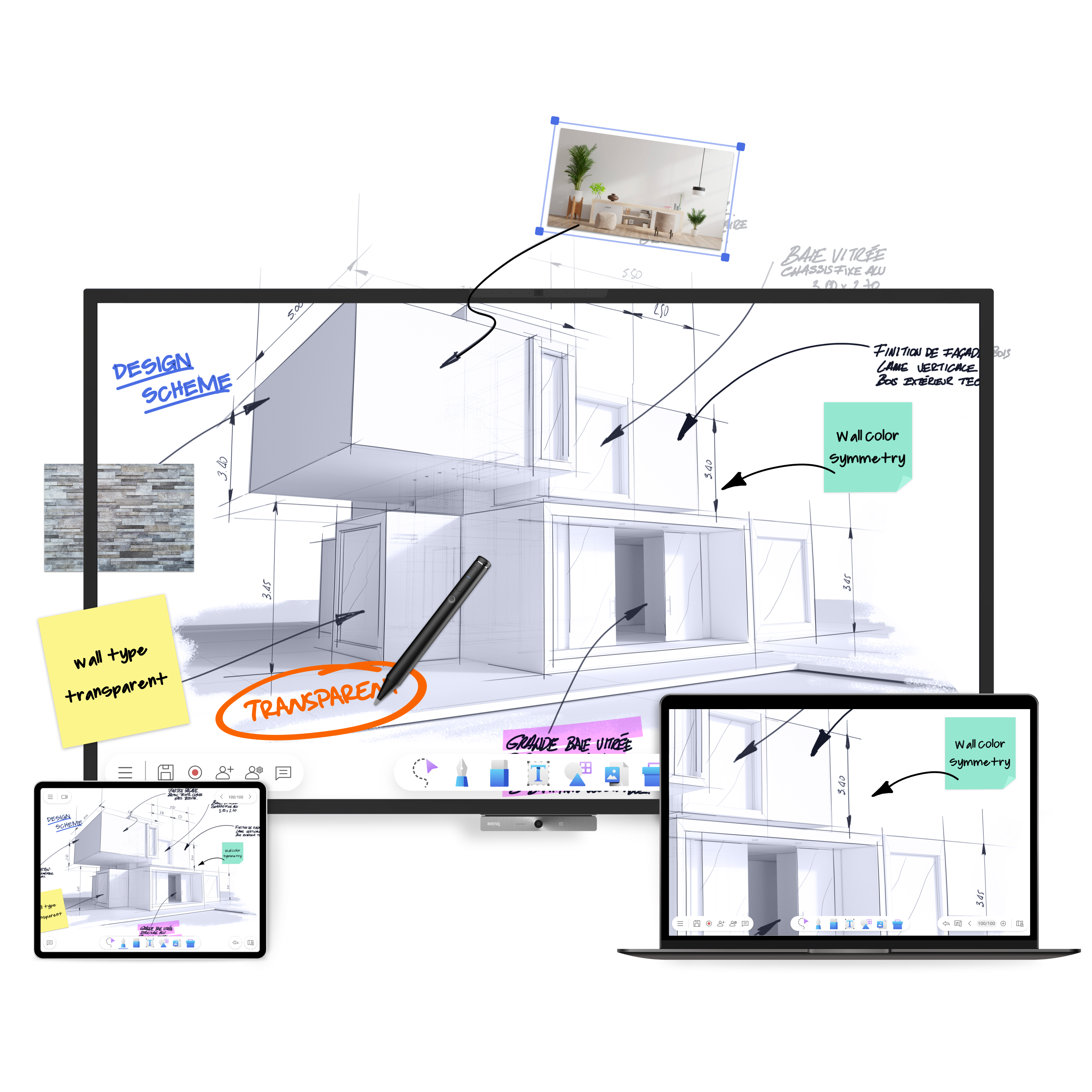K-12 Activities with Microsoft Word on BenQ Education Displays
- BenQ
- 2021-11-17
There’s more to Microsoft Word than just word processing. You can use it to facilitate active learning activities that get your students engaged in the ongoing discussion. Below are a few simple activities that you can easily try out for your classes.
Guided reading with annotation
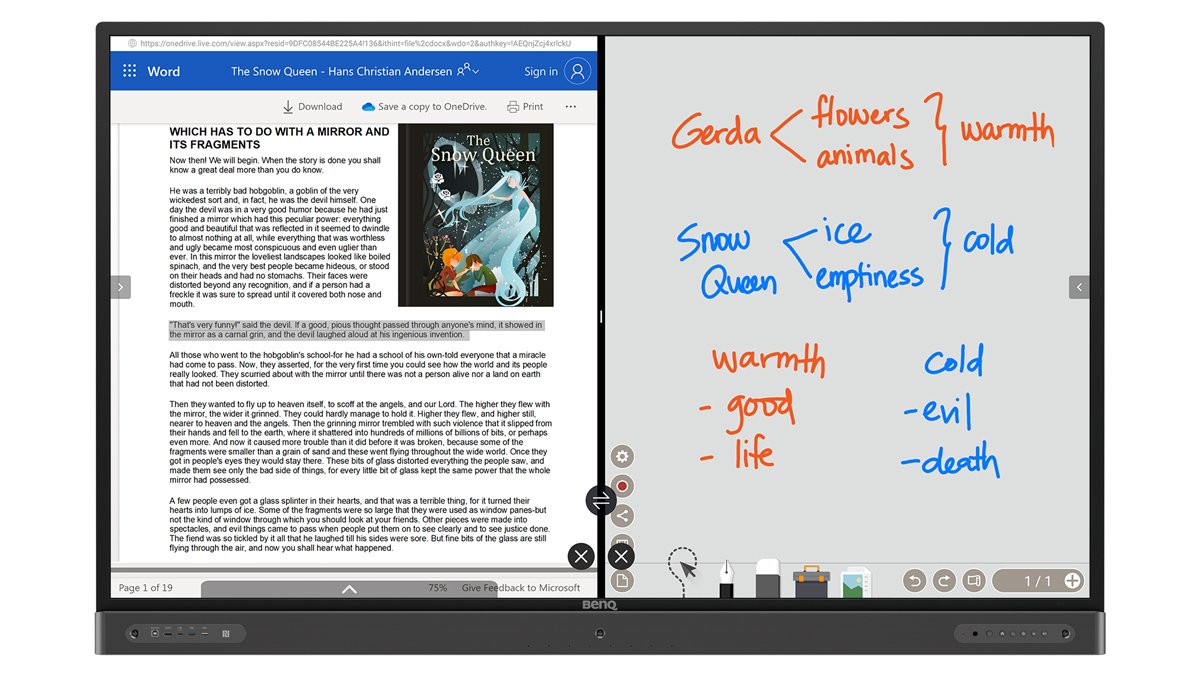
Reading is a fundamental skill that students should be able to acquire at an early age as it affects how they pick up and process information. Having guided reading activities in class allows you to assess your students’ aptitude and identify areas that can be further improved. You can use this activity to correct mispronunciations, check their comprehension, and explain underlying ideas in the text.
Prior to class, you can prepare reading materials on Microsoft Word. Open the document on the RP series and then ask your students to read aloud. During the activity, you can activate the Duo Windows mode to split the screen and use the EZWrite cloud whiteboard for discussions. You can highlight key passages on Word and then write notes on the whiteboard as you and your students analyze the text.
Sentence pattern exercises
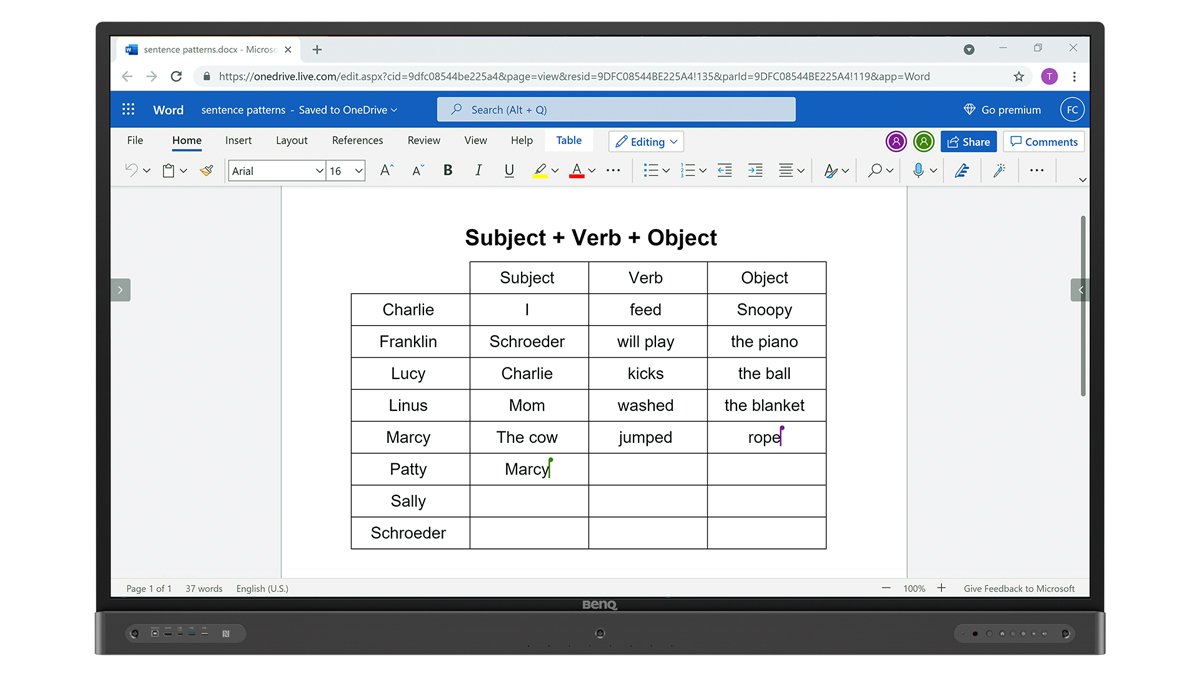
Another activity that is great for early language learners is sentence pattern exercises. Each language follows specific patterns that help speakers and writers construct basic sentences. Normally, you can facilitate this by writing the pattern on a board and having students come over and write their own sentences one by one. But if your school uses cloud-based applications like Microsoft Word on Office 365, you can ask the whole class to simultaneously participate.
Equipped with personal or shared tablets and laptops, students can access a common Word document and fill out a table with their own sentences. Viewed on a large-format interactive display, you can annotate on the screen to make suggestions, correct mistakes, and highlight good examples.
Word substitution
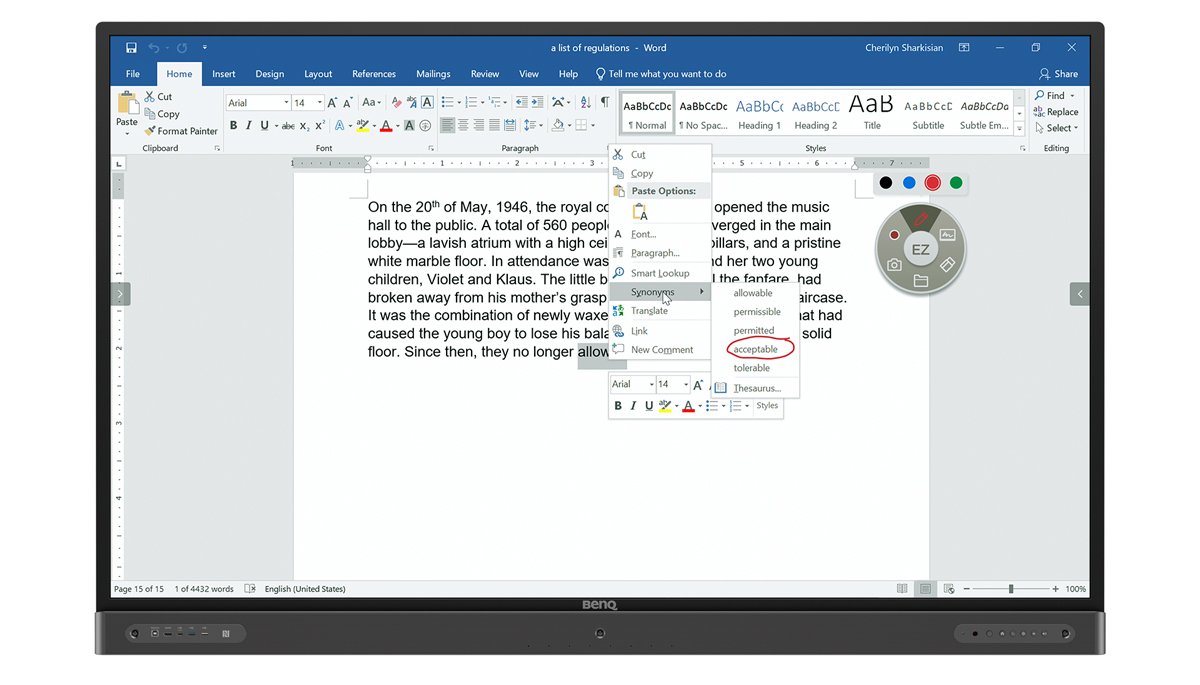
One of the most commonly used features of Microsoft Word is Synonyms. It’s a helpful tool that gives writers alternative options when the right words are hard to come by. Because it’s convenient, many students unfortunately fail to consider the fact that not every synonym can be used the same way. Creating an exercise based on this feature is a good way to not only enrich your students’ vocabulary, but also teach them how to become better writers.
You can load your students’ papers on the display and note sentences that can be improved through word substitution. Use Synonyms to preview alternatives, and then ask your students to rewrite the original sentence using the new word.
Story writing relay
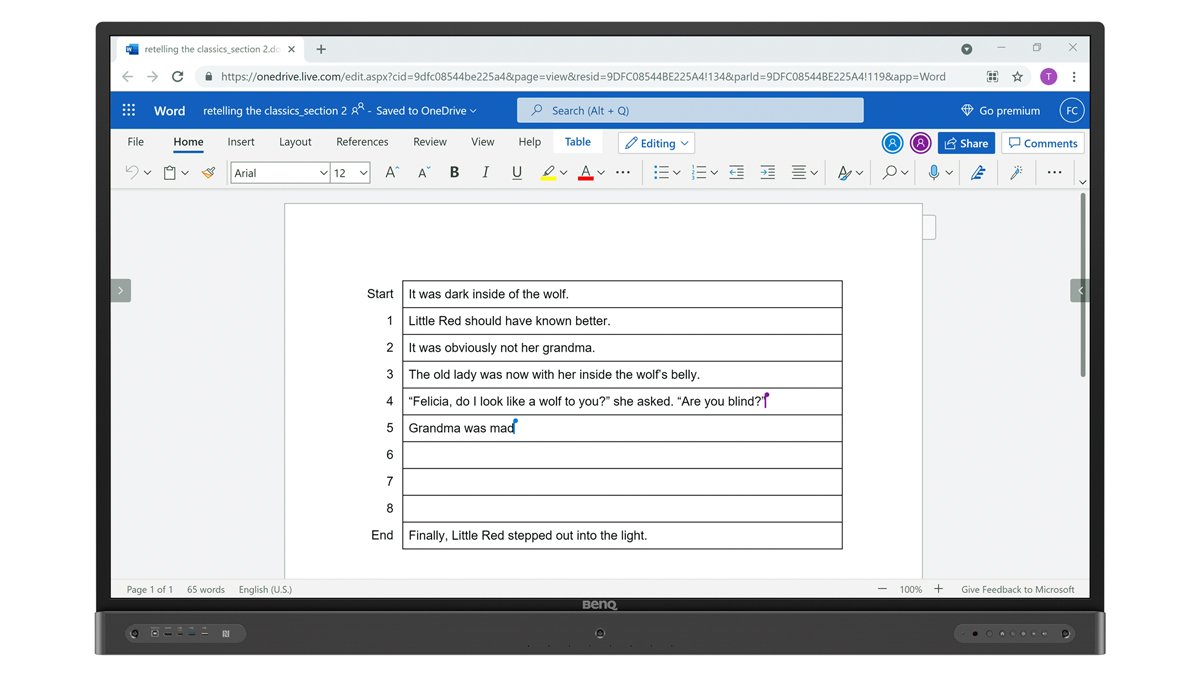
Storytelling is an essential skill that goes beyond literature classes. People who know how to tell great stories are very effective when it comes to sharing their ideas to groups of people, especially in the workplace. This skill can be trained early on through story writing relays.
For younger learners, you can prepare a cloud-hosted Word document that supplies the beginning and the ending of a story. You can then ask students who are typing from their own tablets or laptops to continue the sequence of events until the story is complete. During the writing process, you can coach students who may be struggling with grammar or coming up with ideas. And once the story is done, you can use Word’s comments feature to add suggestions to sentences which you think could be further improved. This type of activity helps students exercise their creativity, show off their vocabulary, and practice their typing skills.
Peer critiques

When students send in their essays or papers, you can collect all their output in an online repository and then open each Word document for live peer critique in class. Your students can use the comments feature on Word to leave their suggestions in the text. This is a good way to develop your students’ sensitivity to grammar, sharpen their analytical skills, and also build up their capacity to take criticism.
Students who know how to critique text will develop a critical eye that they can also apply to their own work. This would hopefully lead to more carefully thought out pieces from them in the future. The activity also aims to strengthen their interpersonal skills as it gives them a controlled safe space where they can learn how to give and receive feedback without being too brash or emotional.


